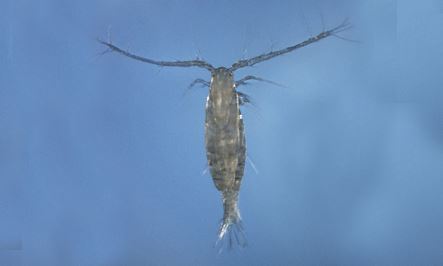In males of this species, several key characteristics can be observed. Firstly, their first antenna (A1) is notably shorter than the length of their body. The posterior part of their prosome exhibits a rounded shape and is adorned with setae, which are small hair-like structures. Additionally, the first two somites of their urosome, which is the posterior part of the body, feature lateral hairs. Furthermore, somites 2, 3, 4, and the anal somite are covered in tiny spinules, tiny spine-like structures. When examining the fifth leg (P5) on the right side of males, the second basipod, which is a segment of the leg, bears a rounded projection on its internal border.
In contrast, females of this species have their own distinctive features. The first antenna (A1) in females extends all the way to the caudal rami, which are the tail-like structures. The first segment of this antenna bears a small, slender spine.
The posterior corner of the prosome, which is the front part of the body, may have one or many very small spines and is often decorated with various fine dorsal hairs. In the case of the outer distal plumose seta on the female’s P5, it is significantly longer than the terminal spine-like segment. This segment has coarse spinules, which are small spine-like structures, for a short distance at about its midpoint.
Moreover, the basis of the female’s P5 is longer than it is wide, and the inner spine is dentate, implying that it has tooth-like projections. Additionally, the first two segments of the urosome, the posterior part of the body, are characterized by dorsal spinules on their posterior borders.
